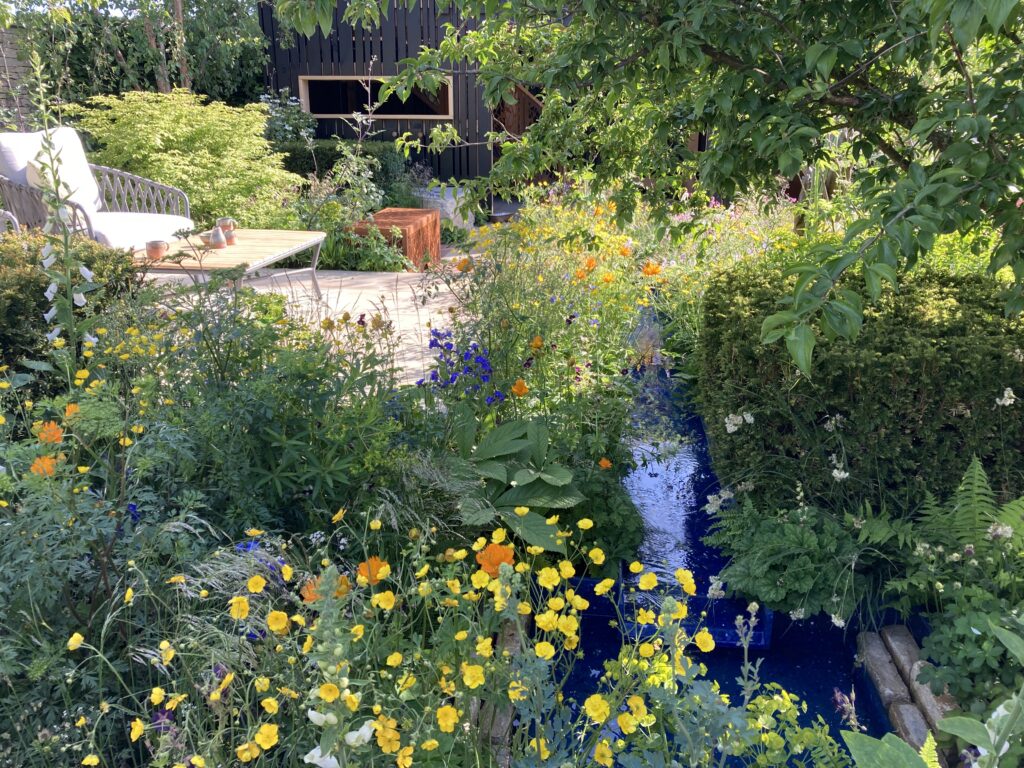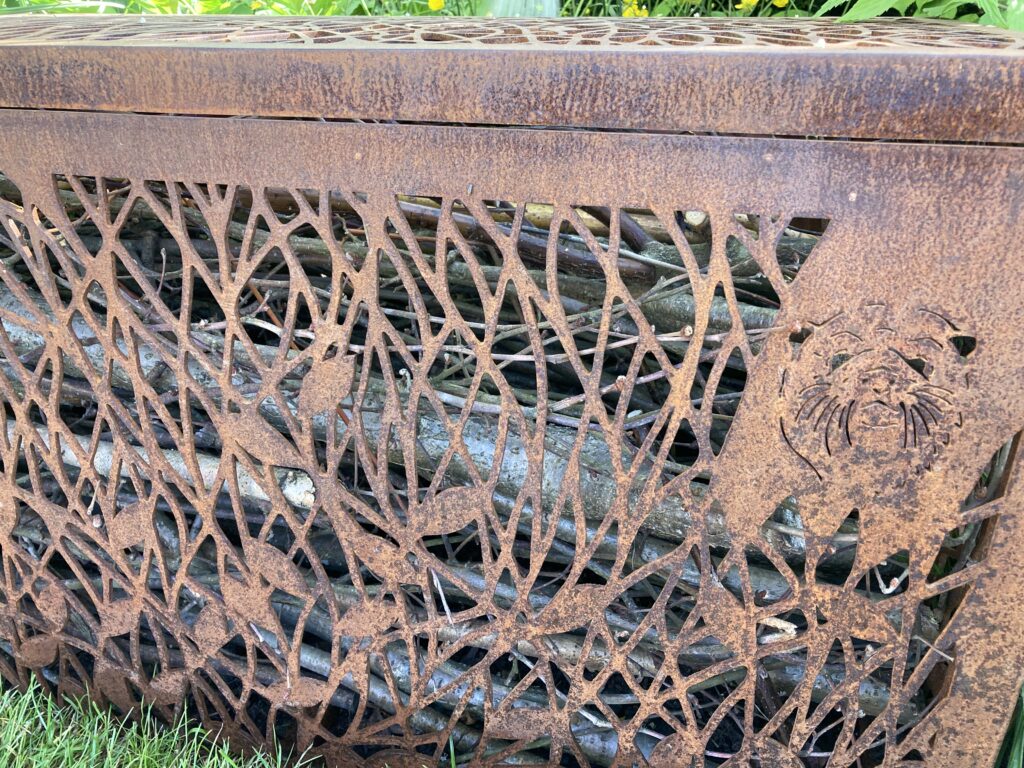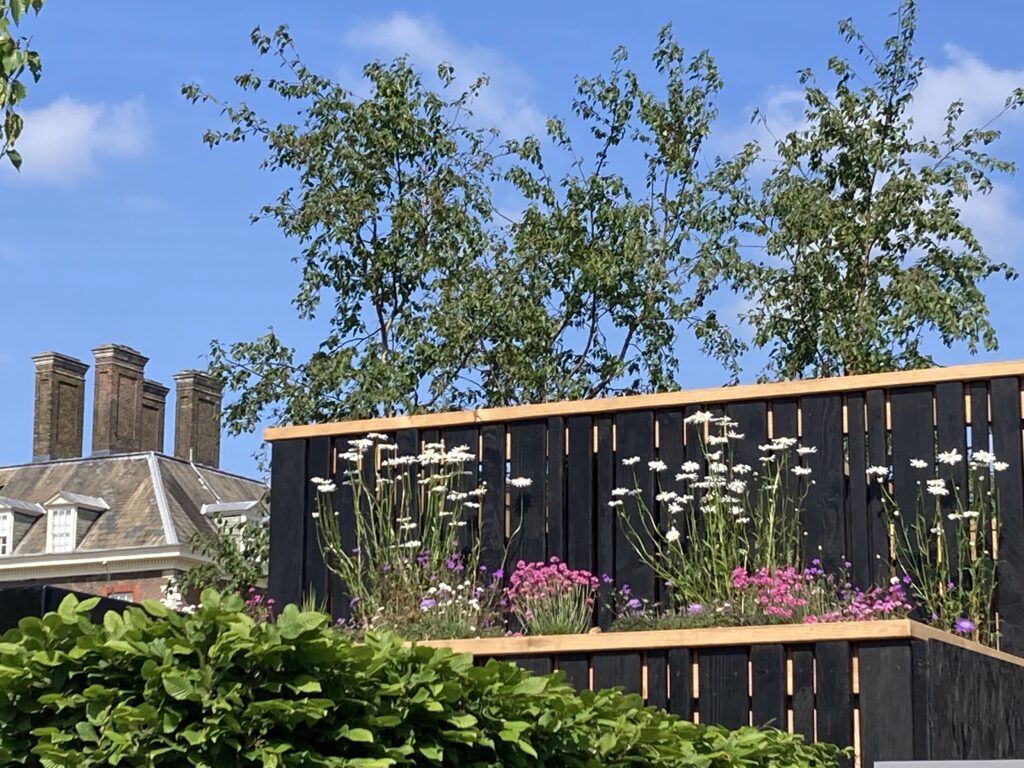Gateway Wildlife Garden – Chelsea 2023
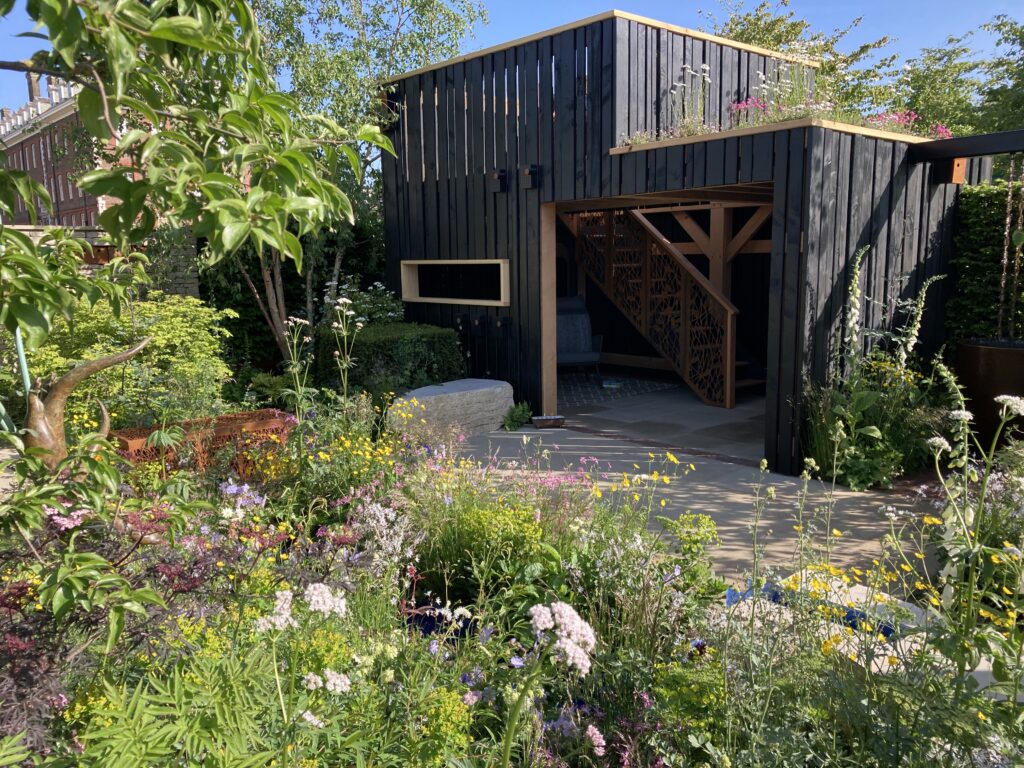
It's a balance. I want to create habitat for wildlife – but that doesn't mean I want to live in an overgrown 5-acre field. I therefore designed the gardens closest to our home to be more ornamental, featuring some of my favorite deer-resistant trees, shrubs and perennials, with a mid-point transition area consisting of a loose "meadow" backed by native forest. The property perimeters are where we toss yard waste, prunings, dead branches etc. and as such are a natural habitat for everything from birds to snakes and salamanders. I have the luxury of space – but how can you accomplish this in a small garden?
While all the gardens at the 2023 RHS Chelsea Show were exceptional in their own way, the one that struck me the most was the RSPCA (Royal Society for the Prevention of Cruelty to Animals) Garden because it was beautiful, understandable and achievable even in a tiny space.
Check out this link for an immersive 3D video of this garden which does it far more justice than my photos were able to do! The image below is also helpful to understand spatial relationship between the elements.

RSPCA Garden designed by Martyn Wilson. Image courtesy of designer.
I had a great chat with the award-winning designer Martyn Wilson who was thrilled that I "got it"! He had designed a recognizable, contemporary garden with a clearly defined footprint of pathways and a sitting area that provided solid boundaries and structure for the looser plantings. To one side was a small two-story building that could easily be multi-purpose (think potting shed, storage, covered shade) yet looked crisp and modern – something we could all envision in our own space. Serving as a backdrop was a border planted with shade trees and flowering shrubs – again something that read as instantly familiar.
The primary water feature was a meandering rill constructed from recycled plastic in a fabulous cobalt blue color which cascaded into a small pool. This provided an enchanting focal point as well as movement, sound and a safe drinking spot for wildlife.
Here's where things got really clever. This rill was flanked by narrow planted strips in a naturalistic woodland style – including buttercups! Yes it was deliberately planted with some weeds – but they were contained so that the overall effect was loose and billowing – a contrast to the rigid hardscape. It looked strategic yet natural, all while attracting bees, butterflies, hoverflies and more.
Yet wildlife gardens go further than simply attracting pollinating insects and birds. They also create habitat for nesting, for basking salamanders and (at least in England) trails and safe places for hedgehogs. Here, again Martyn did an excellent job of including them all – yet keeping the effect orderly enough to feel achievable.
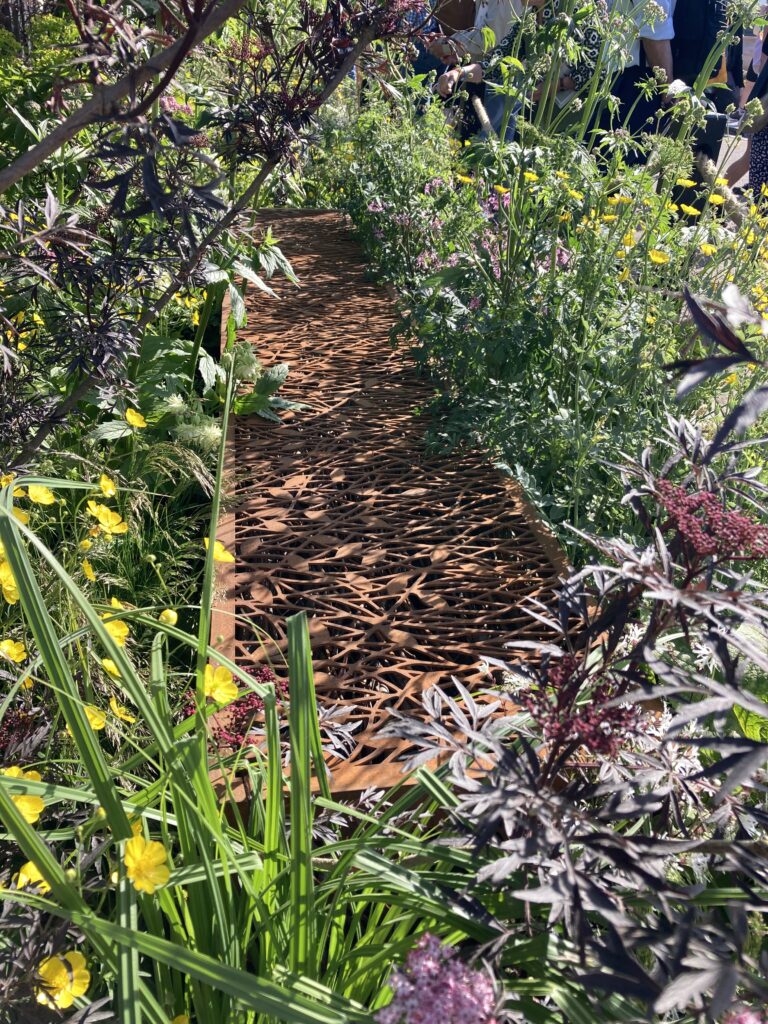
These 'dead hedges' were a fascinating way of storing tree prunings for habitat while introducing an artistic element and avoiding a heap of decaying wood! Let's be real here – sometimes we just need to dress things up a bit.
The stone wall includes bird nesting boxes, some of which are clustered together since some species prefer to nest in groups. Modern 'dead hedges' are housed in laser-cut Corten steel boxes with a hinged lid. Gardeners can lift this to add tree prunings, creating a habitat for birds and insects. At the base of each hedge sits the entrance to a purpose-built hedgehog house.
Depending on where they were located in a garden I could envision adding simple throw pillows to the top of these and using them as extra seating if they were designed to withhold a persons weight.
The building was actually designed as a wildlife observation hide so there is room inside for a tripod, camera and binoculars. A green roof on part of this captures rainwater and provides additional habitat for birds and insects. 'Hotels' on the sides welcome solitary bees such as leafcutter bees.
Overall this was a garden that showed you that it was possible to have a wildlife garden that was both neat and naturalistic and I for one applaud Martyn for demonstrating ways that even the most fastidious of gardeners can enjoy them.
Additional Resources
Subscribe to Receive Blog Posts
Gardening inspiration delivered right to your inbox from Le Jardinet
